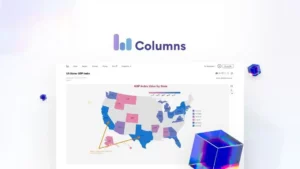SMB software solutions enhance small business efficiency by automating tasks, improving collaboration, and providing data-driven insights. Key features include usability, scalability, and cloud accessibility, making it essential for modern businesses aiming to grow and adapt in a competitive landscape.
In today’s fast-paced world, smb software is revolutionizing how small businesses operate. With the right tools, owners can automate tasks, enhance efficiency, and improve customer engagement. Whether you’re just starting or looking to scale, the right smb software can make a remarkable difference. In this article, we will delve into the fundamentals of this technology, its abundant benefits, and how to select the perfect software tailored for your business.
What is SMB Software?
SMB software refers to solutions specifically designed to meet the needs of small and medium-sized businesses. These tools help streamline various processes, from finance and accounting to customer relationship management (CRM) and project management. By using SMB software, businesses can enhance efficiency, reduce costs, and improve decision-making.
One of the main characteristics of smb software is its scalability. This means that as a business grows, the software can adapt to handle more tasks and larger amounts of data without necessitating a complete overhaul. This flexibility is crucial for small businesses that anticipate future growth.
Another essential feature is the ease of use. Many SMB software solutions are designed with user-friendly interfaces, enabling employees to become proficient quickly without extensive training. This is particularly important for small teams that may not have dedicated IT support.
Moreover, SMB software often integrates with other tools and platforms that businesses use, enhancing overall functionality. For example, accounting software may work seamlessly with payment processing systems and inventory management tools, creating a cohesive ecosystem that streamlines operations.
Lastly, cloud-based SMB software solutions provide the added advantage of accessibility. Companies can access their data and applications from anywhere, facilitating remote work and ensuring business continuity.
Top Benefits of SMB Software for Small Businesses

SMB software offers a variety of benefits specifically beneficial for small businesses. One major advantage is cost efficiency. By centralizing tasks into a single platform, businesses can reduce overhead costs related to multiple applications and simplify their technology stack.
Another key benefit is improved productivity. With automated workflows, employees spend less time on repetitive tasks and more time on important projects. For instance, software that automates invoicing or customer follow-ups allows teams to focus on strategy and growth.
Additionally, enhanced collaboration is a critical benefit. Many SMB software tools offer features that promote teamwork, such as shared calendars, task assignments, and real-time document editing. This fosters better communication among team members, leading to more efficient project completion.
SMB software also comes equipped with data analytics tools. These features enable small businesses to track performance metrics, understand customer behavior, and make data-driven decisions. Having access to real-time analytics helps managers identify trends and take action quickly, which is vital in today’s competitive market.
Finally, customer relationship management is significantly enhanced with the use of SMB software. Many solutions come with built-in CRM functions that help manage customer interactions effectively. This can lead to improved customer satisfaction and loyalty, which are critical components of sustained business growth.
Essential Features in Effective SMB Software
When selecting effective SMB software, there are several essential features that small businesses should consider. First and foremost is usability. The software should have an intuitive interface, enabling employees to use it without extensive training. A user-friendly design encourages adoption and productivity from day one.
Another critical feature is scalability. As your business grows, your software should be able to expand alongside it. This means adding more users, features, or even integrating new tools seamlessly without disruptions.
Integration capabilities are also important. Effective SMB software should easily connect with other tools your business uses, like accounting software, email platforms, or CRM systems. This ensures that all parts of your operation can work together smoothly, enhancing workflow and communication.
An analytics dashboard is a must-have for tracking key performance indicators (KPIs). The ability to visualize data, generate reports, and glean insights can empower decision-making, helping you understand what strategies are working and which need adjustment.
Lastly, strong customer support is vital. Having access to reliable technical support can minimize downtime and help resolve issues quickly. Look for software providers that offer various support options, including live chat, email support, and extensive online resources.
How to Choose the Right SMB Software for Your Needs

Selecting the right SMB software is crucial for small businesses aiming for growth and efficiency. To start, it’s essential to clearly define your business needs. Consider what specific tasks you want the software to address, such as accounting, project management, or customer relationship management (CRM). Understanding your requirements will help narrow down your options.
Next, you should research available options. Look for software reviews, comparisons, and ratings to gain insights into user experiences. Websites that specialize in software reviews can provide valuable feedback about functionality, ease of use, and customer service.
Another important step is to evaluate pricing models. Many SMB software tools offer different pricing tiers based on features and number of users. It’s important to choose a plan that fits your budget while still offering the necessary features to support your business effectively.
Once you have a list of potential options, take advantage of free trials. Many software providers offer free trials that allow you to test the software’s functionality before making a commitment. This is a good way to assess usability and see how the software fits into your workflow.
Lastly, consider the support and resources provided by the software vendor. Reliable customer support can make a significant difference when you run into issues. Look for companies that offer comprehensive support, including tutorials, FAQs, and direct customer service.
Future Trends in SMB Software Solutions
The landscape of SMB software solutions is constantly evolving, with several future trends emerging that small businesses should pay attention to. One significant trend is the increasing use of artificial intelligence (AI) and machine learning. These technologies enable software to learn from data and improve functionalities, helping businesses make smarter decisions based on predictive analytics.
Another trend is the rise of cloud-based solutions. Cloud technology allows businesses to access their software and data from anywhere, facilitating remote work and collaboration. This flexibility is becoming essential as more employees choose to work from home or in various locations.
Integration across platforms is also gaining traction. Businesses are looking for software solutions that seamlessly connect with other tools they already use, promoting streamlined workflows and reduced manual data entry. This trend allows for a more cohesive tech ecosystem that boosts overall efficiency.
The emphasis on cybersecurity is another crucial trend. As more data is stored online, protecting sensitive information has become vital. Software solutions are increasingly incorporating advanced security features to safeguard user data from potential breaches.
Lastly, the focus on user experience is intensifying. Developers are prioritizing intuitive interfaces and simplified user journeys to ensure that everyone, even non-technical users, can navigate the software easily. A positive user experience often leads to higher adoption rates and better overall satisfaction.
In Conclusion: Embracing SMB Software for Growth
Choosing the right smb software can significantly enhance your business’s efficiency and productivity. By understanding the key benefits, essential features, and future trends, you can make an informed decision that aligns with your goals.
From improved collaboration to data analytics, the right software can empower your team and streamline operations. As small businesses continue to adapt to a changing landscape, investing in effective software solutions is not just beneficial; it’s essential for future growth.
Embrace the potential of smb software to thrive in your market and unlock new opportunities.
FAQ – Frequently Asked Questions about SMB Software
What are the main benefits of using SMB software?
SMB software can improve efficiency, reduce costs, facilitate collaboration, and provide valuable data analytics to help businesses make informed decisions.
How can I determine if SMB software is right for my business?
Assess your business needs, research different options, and consider the scalability, usability, and support options of potential software before making a choice.
What essential features should I look for in SMB software?
Key features include user-friendliness, scalability, integration capabilities, analytics dashboards, and reliable customer support.
Is cloud-based SMB software secure?
Most cloud-based SMB software solutions invest heavily in cybersecurity measures, ensuring that your data is protected against potential threats.
How can SMB software assist with remote work?
Cloud-based SMB software allows access from anywhere, enabling teams to collaborate seamlessly and remain productive regardless of their location.
What are the future trends in SMB software?
Future trends include increased artificial intelligence integration, enhanced cybersecurity measures, and a focus on user experience and platform integration.




